National
National Pencil Company was one of a cluster of manufacturers based in Shelbyville, Tennessee, “The Pencil City” (after starting in Atlanta).
Brands:
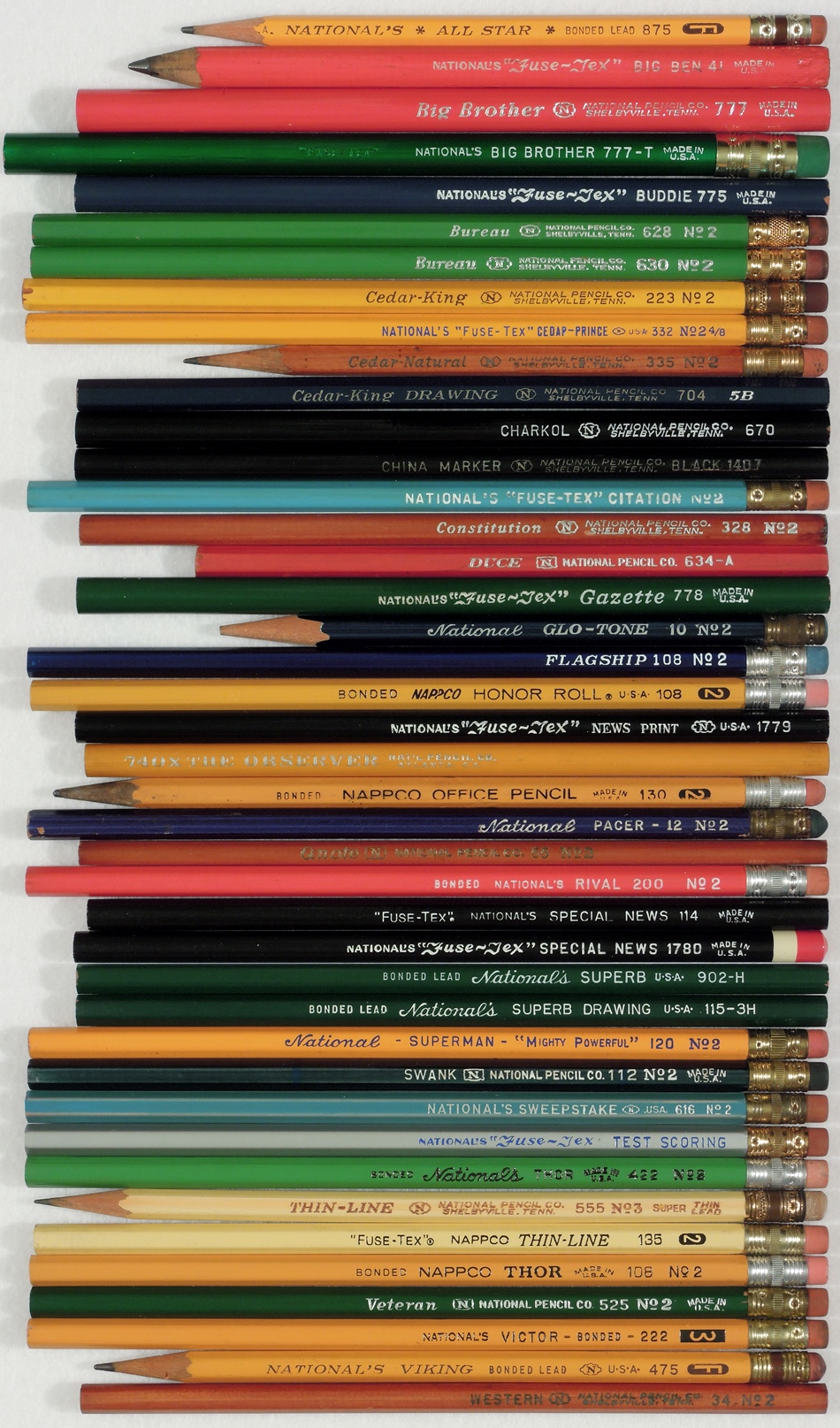
Colored brands:
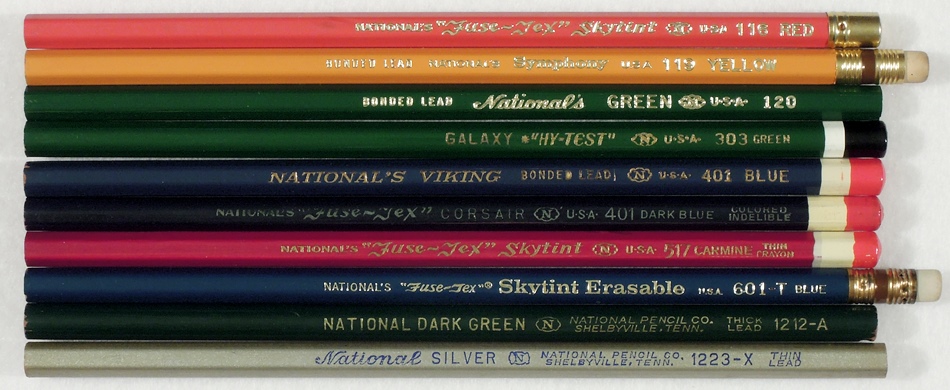
National Copying varieties:

Here are pairs of pencils that are the same or nearly so, but with one painted and the other having clear varnish:

Wallace
Wallace Pencil Company, Missouri, USA (acquired by Dixon in 1982) —
Graphite and copying brands:
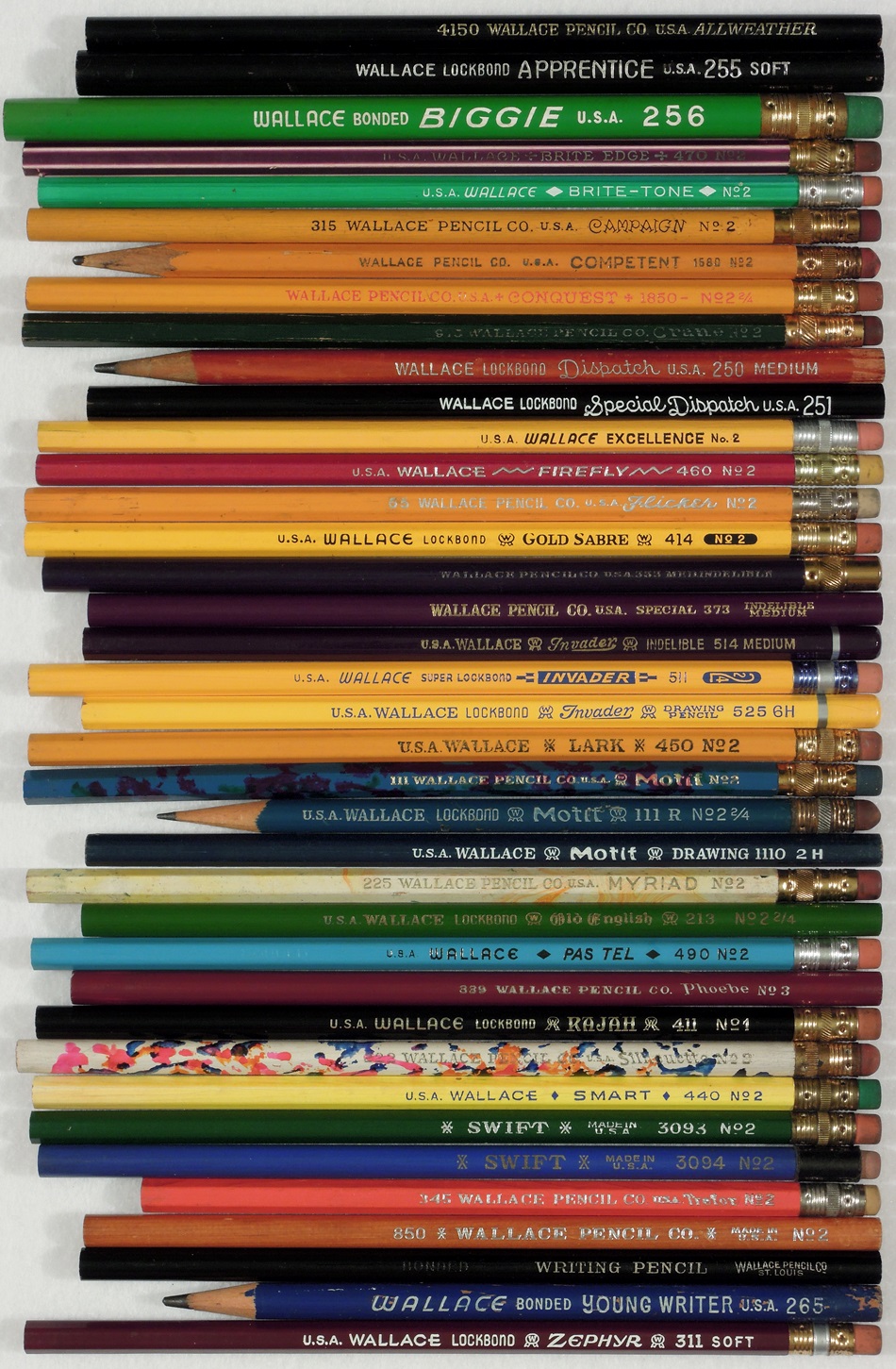
Colored:
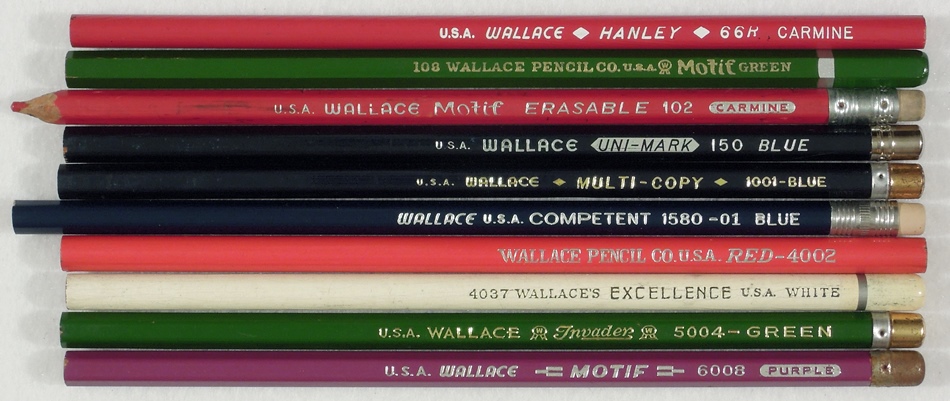
Sussner Nopitsch Glocken Bell
From Georg Büttner’s site about German pencil companies in the Nuremberg area, here’s what I gather (imperfectly — I don’t speak German) about the relationship between these companies:
G.W. Sussner founded a pencil company in 1846. Moritz Nopitsch founded a company in 1861, which was passed on to his son Gebrüder Nopitsch. Nopitsch and Sussner were joined in 1900. In 1925, the company was named Glocken (in English, Bell); the name was acquired from another company named Glocken. (Was that whole company acquired?)
Sussner:

M. Nopitsch:

M. Nopitsch and Sussner:

Gebrüder Nopitsch:

Glocken:
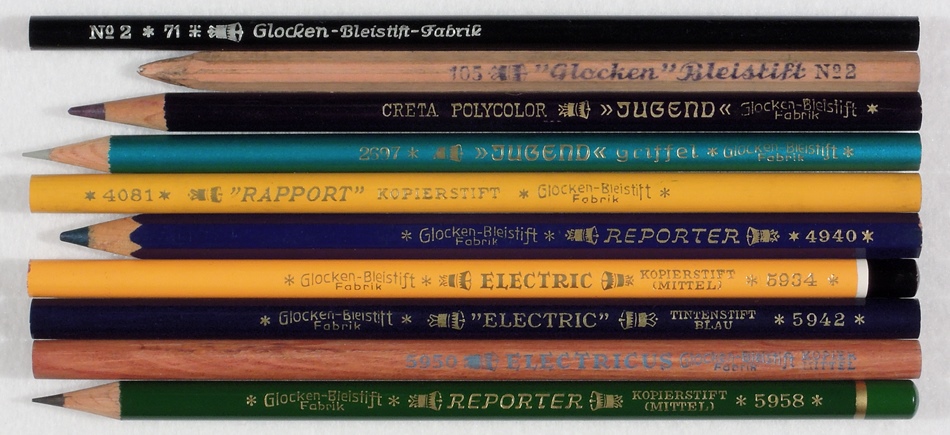
Bell:

Some of the older hexagonal pencils have what appears to be factory sharpening in the form of six facets —

Staedtler USA
J.S. Staedtler is another (see Swan) German pencil company that had a manufacturing subsidiary in the United States. Hackensack and Monteville, New Jersey, are locations mentioned on the pencils.
Brands:
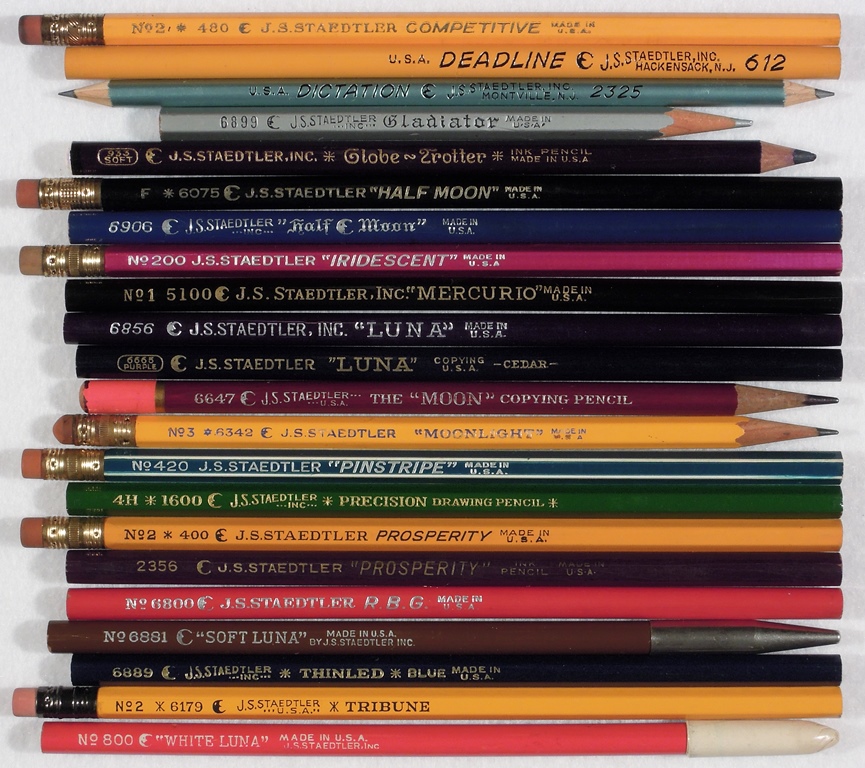
Some of the brands have German counterparts, while many (Competitive, Deadline, Pinstripe, and others) are only American, as far as I know.
Pencils Advertising Advertising Pencils
Some advertising pencils advertise themselves as models of ad pencils available from suppliers. They often have a brand name and product number, but collectors don’t consider them to be “brand-name” pencils. —

Here are wood-toned types:

These show some companies that produced ad pencils:

Indiana Pencil Co and Union Pencil Co also made brand-name pencils, as shown in my Obscure U.S. Pencil Companies post. Pencil Specialty Company was a division of American Pencil Co. It is often ambiguous whether or not specific pencil suppliers did more than the printing, but its pencil confirms that Wilkerson-Akers did manufacture pencils. Note that Cincinnati Pencil Company was located in Nitro, West Virginia.
Clark’s Indelible Pencil
I’m back!
One of the first wooden pencils I ever spent a chunk of money on was a very old and unusual one that I had never seen before, from the Clark Indelible Pencil Company of Northampton, Massachusetts. I obtained several varieties since then.
These specialized pencils were made for writing permanently on cloth and other materials.
The active part of the pencil is integrated with a protective tube:


A patent from 1866 (http://todayinsci.com/Events/Patent/IndeliblePencilPatent56180.htm) describes in detail how the pencil was made. The indelible ingredient in the lead is silver nitrate. I remember this substance from my high school Chemistry class because it gave us permanent (until the skin wore off) stains on our hands.
At first I thought that the leads were square. But the patent describes how round leads were made from paste pressed into a mold, then placed into sawed grooves and enclosed with a strip of wood (clearly visible in the fourth pencil insert). Hence, it’s a round lead (with cementing material) in a square hole.
Some of the pencils have second insert, a soft chalky substance in a paper tube. I think this is probably gypsum. The patent talks about gypsum as an ingredient of the lead, where it forms a compound that prevents softening due to atmospheric moisture. Instructions on the label seem to describe the substance being rubbed on a dampened area of the cloth prior to writing. Maybe it is gypsum helping to stabilize the mark. —



A box with French labels, showing that Clark’s pencils were sold by A.W. Faber in Paris:


The sixth pencil in the first photo is one of the newer ones. The label suggests some new uses, including marking toothbrushes (no more disgusting mix-ups!) and umbrellas. It came with this price list:

United States Pencil Co.
United States Pencil Co., an American pencil company —

USCO 486 varieties:

USCO Electro 486, a “transitional species” between USCO Grafine Lead 486 and USCO Electro 100:

USCO Electro 100:
Three different expressions for 2-1/2:

The only other place I’ve seen 2-5/10 is on Ticonderogas.
Nearly identical Evergreen copying pencils made in Czechoslovakia and in USA:

An older ad showing that the Czech versions were actually made by L & C Hardtmuth:

I have seen an ad indicating that Our Drummer is also from U.S. Pencil Co. —



Recent Comments